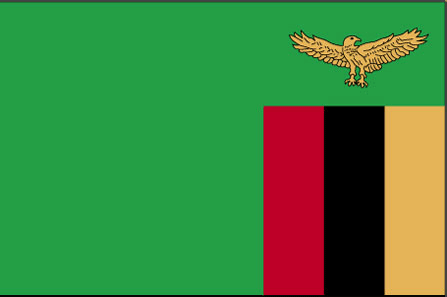To help inspire or plan your trip to Zambia, some of its major attractions
for travellers are shown below, including some of the best natural, historical, cultural and adventure sites in the country.
These include all of UNESCO World Heritage Sites for Zambia which represent the best
of the world's cultural and natural heritage.
Click on the icons below to focus on specific types of features
(click again to return to all).
|
|
|
|
|
|
|
|
|
|
|
|
 |
|---|---|---|---|---|---|---|---|---|---|---|---|
| Natural | History | Wildlife | Trekking | Cities | Religious Monument | Boat Journey | Rail Journey | Diving | Cultural | Adrenaline | UNESCO WHS |
| Livingstone | |
|---|---|
The town of Livingstone is the Zambian base for exploring Victoria Falls and is located 11km from the Falls. It has experienced a renaissance in popularity with the recent political troubles in neighbouring Zimbabwe. Aside from exploring the Falls themselves from the ground and the air, there are a range of adventure activities available including world class white water rafting on the Zambezi, bungee jumping from the bridge over the Zambezi connecting Zambia and Zimbabwe, gorge swings over Batoka Gorge, and river boarding. After all that activity you can wind down on a sunset booze cruise. | |
| South Luangwa National Park | |
|---|---|
South Luangwa National Park is Zambia's premier wildlife park and safari experience. It's regarded as one of Africa's finest wildlife reserves, comprising more than 9000 km² of unspoilt wilderness in Zambia's eastern province, yet is well off the beaten tourist track. The varied terrain includes dry shrublands and grasslands, mopane woodlands and oxbow lakes as well as the Luangwa River which teems with crocodiles and hippos. South Luangwa is home to over 400 bird species and 100 animal species, including elephant, buffalo, bushbuck, kudu, lion and the world's highest naturally occurring population of leopard. South Luangwa is famous for its walking safaris with expert guides, allowing you to get up close and personal to Africa's wildlife and immerse yourself in sights, sounds and scents of the African bush. | |
| Lake Kariba | |
|---|---|
Lake Kariba affords the opportunity for sunset cruises and game cruises to see animals at the water's edge and the wide variety of birdlife. There is also the option of spending one or more nights on a house boat, relaxing and enjoying the scenery and spectacular sunsets. Maaze Island on Lake Kariba offers a game walk and visit to a crocodile farm. | |
| Lower Zambezi | |
|---|---|
Following in the footsteps of the explorer David Livingstone who described "scenes so lovely they must have been gazed upon by angels in their flight", the Lower Zambezi River offers the chance of a safari with a difference - canoeing trips down the river as you glide past herds of elephant and buffalo drinking in the river, crocodiles on the riverbank and pods of hippos lying in the water. Travelling between Kariba and Luangwa, the river flows past two national parks - the Lower Zambezi National Park to the north and the Mana Pools National Park to the south, offering the chance to see creatures such as zebra, lion or even leopard by the riverside. | |
| Kafue National Park | |
|---|---|
Kafue National Park is Zambia's oldest and largest national park, covering some 22,500 km². Located in a remote inland setting, there is a wide diversity of game in its savannahs, woodlands and around the Lufupa River in the northern Busanga Plain. This includes wildebeest, hartebeest, buffalo, Burchell's zebra and numerous antelope species. Attracted by all this game are leopards, cheetahs and tree-climbing lions. Kafue provides a traditional safari adventure well off the beaten track. | |
| Mosi-oa-Tunya / Victoria Falls | |
|---|---|
Victoria Falls, or Mosi-oa-Tunya ("the smoke that thunders") are one of the natural wonders of the world. Spanning the entire breadth of the Zambezi River, they are 1700 metres wide and drop over 100 metres to the gorge below, creating a thunderous noise and a mist that can be seen, and felt, at great distances. The Falls transform a wide, calm river into a ferocious torrent that flows through a series of narrow gauges below. On the Zambian side in Mosi-oa-Tunya National Park you can stand right next to the eastern cataract of the Falls and feel the full force of the water. In Victoria Falls National Park on the Zimbabwe side, you're further from the Falls but have a greater perspective. The best perspective is perhaps obtained from above though, on flights on either fixed wing aircraft, helicopters or microlights. The flow over the Falls is very dependent on the time of year - there can be a 20 fold difference between the rainy season (March to May) and the dry season (September to December), though the sheer scale of the Falls can be easier to appreciate with less volume. UNESCO World Heritage Site: Mosi-oa-Tunya / Victoria Falls | |




